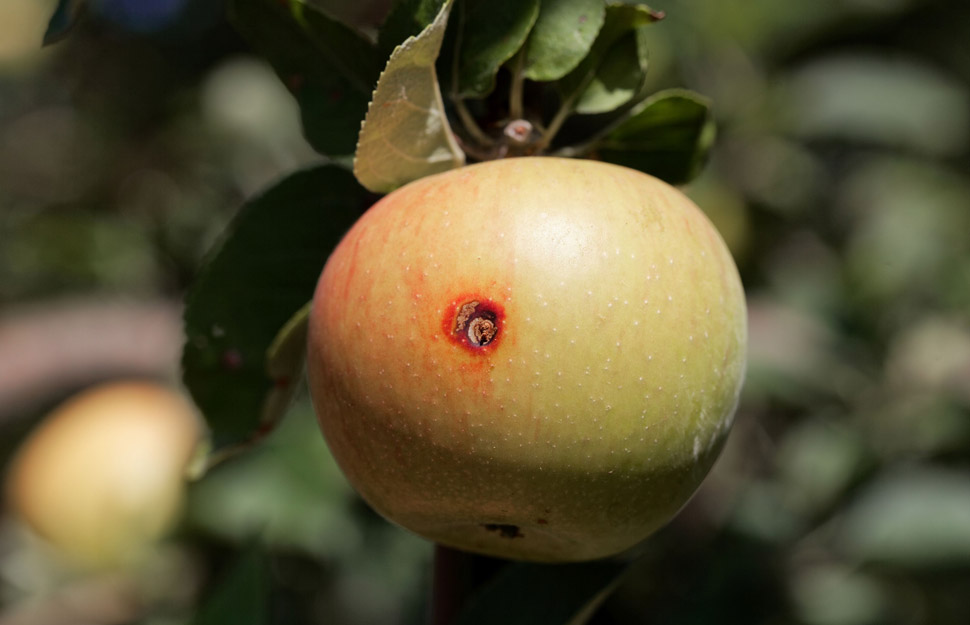
Biting into a wormy apple or pear is very unpleasant! But it is certainly better for your health than biting into the same commercial apple or pear, aesthetically perfect, it is true (although not as good in taste) but at the price of no less than 35 treatments! Enough to put you off! I prefer my small wormy apples with holes, knowing that it is possible to fight preventively and naturally against the insect responsible for the disease.
The small holes, not always visible on the skin of the fruit, are the work of the codling moth caterpillar. This is a grayish moth (Cydia pomonella) that flies at dusk, which makes its action and its devastation particularly sneaky.
The “apple and pear worms” are actually small caterpillars, with pink bodies and brown heads. They represent the larval stage of the adult moth whose 1st generation flight is generally spread out from April to July.
The females lay eggs directly on the leaves and fruits in formation. When they hatch, the young and tiny larvae quickly seek refuge inside the fruit. They pierce a small hole and then bore a spiral gallery into the heart of the apple or pear, where the seeds are located. The fruit is ruined as they grow and excrete, although some parts can sometimes be recovered.
Apples, pears or quinces that have been attacked may also fall prematurely.
When the larva has finished growing, it emerges and makes a cocoon in a cavity of the bark or returns to the ground to spend the winter.
How to naturally fight against codling moth?
As is often the case, prevention gives the best results. Prevention in four steps.
The usual application of a spray
In winter, the application of a whitewash (also called tree whitewash) on the trunk allows to eliminate the larvae that have remained in the folds of the bark and gone into dormancy. A “homemade” whitewash made from sifted ashes and water is more discreet and just as effective. Larger branches can also be treated without visually distorting the tree.
Pheromone traps
In the spring, starting in early May, pheromone traps can be set up to lure and glue male moths. This will limit the fertilization of the females and thus the damage caused. These traps are readily available in stores.
Hormonal disruptors
The principle is to diffuse in the atmosphere molecules which scramble the hormonal signals. Males and females can no longer reproduce: the males get confused, are confused and can no longer respond to the call of the females.
Eliminate contaminated waste
Finally, in summer and fall, it is important to quickly pick up and dispose of all fallen fruit before the worms they contain return to the ground.
